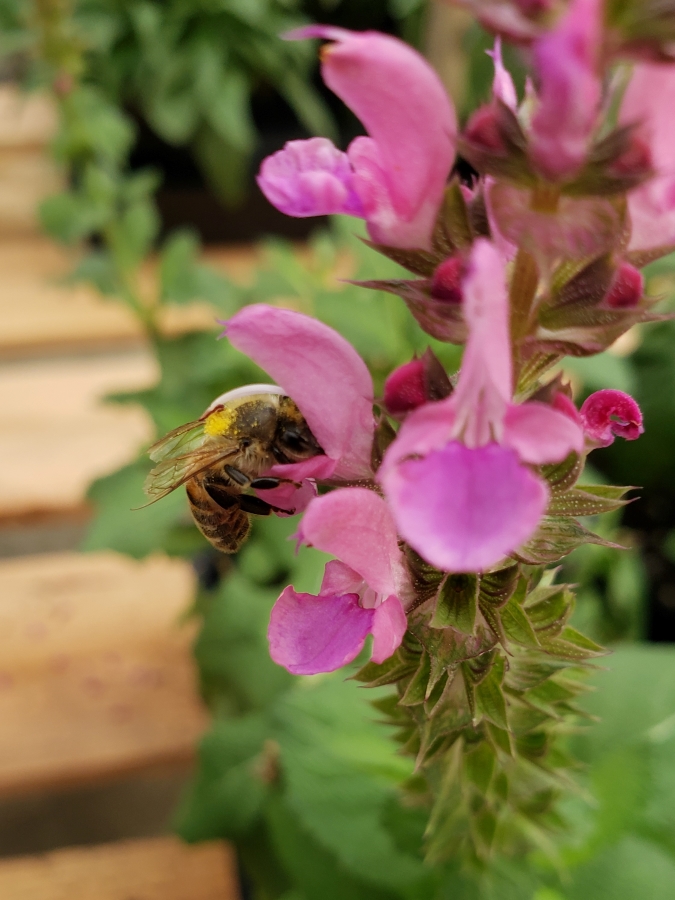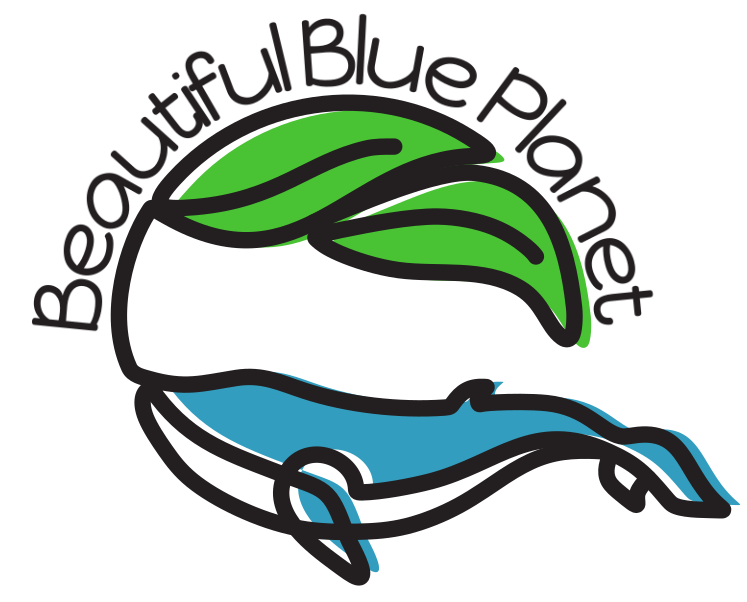It’s likely there’s a pesticide in the flowers you’re buying at the nursery or garden center. The plants have been grown with it in them to keep them free of pests during their growing stage and while they’re in the retail markets, so we can plant pest-free plants at our homes (sounds alright, doesn’t it?).
This pesticide is a class of pesticides called neonicitioids, or neonics for short. It’s a nicotine-based chemical that affects the nervous system of pests, specifically insects. It’s usually used systemically so that it travels throughout the entire plant to kill pests that suck on foliage; pests like aphids, certain scales, whiteflies, flea beetles, etc.
But, the pesticide accumulates in the nectar and pollen of the plants’ flowers. To make matters worse, it remains in the plant for many months and even years.
This means bees and other pollinators ingest this pesticide. It doesn’t kill them outright but it’s been shown to affect their cognitive abilities, communication, and navigation skills, which impairs their ability to gather food for their young.
Why is the pesticide used?
Neonics were developed as a pesticide with lower toxicity to humans than organophosphates, which they replace. Testing was done to determine their safety to humans and small mammals. They were approved for use in 1994 and quickly became the most used pesticide in the world.
They’re used as a preventative pesticide, and used in all the plants. They’re applied systemically as a soil drench or as a seed coat that infuses it into the plant as it germinates and grows. They’re now used on most crops!
But the research did not look closely at the impacts to bees.
“The motivation for producing neonicotinoids was reduced human toxicity, but the environmental and ecosystem impacts were not considered in enough detail to predict what’s going on.”
James Frazier, professor of entomology at Pennsylvania State University in an article in YaleEnvironment360, by Elizabeth Grossman, 2013

Shelby Cohron via Unsplash
Effects on bees
Many studies show that neonics have a ‘sublethal’ effect on bees. They’re not killed outright but they experience the effects mentioned above which impairs food gathering abilities and lowers production of offspring, and reduces ability to resist pests and diseases.
Native bees, like bumble bees and other small bees, are thought to be more vulnerable than honeybees. And not much research has been done on them yet.
Effects on beneficial insects
Beneficial insects are the insects that prey on “pest” insects—the ones they’re trying to get rid of with the neonics. But some pest insects are becoming resistant to the neonics. Those pest insects concentrate the neonics and pass it to their predators, harming them—a lose-lose situation! More, the aphids secrete honeydew which attracts the beneficial insects and is contaminated with the neonic chemical, again, harming important beneficial insects.
Effects on birds
A Canadian study was done to determine effects of neonics on white-crowned sparrows. The sparrows were fed only 1% of what birds may normally find in agricultural fields. The results were rapid weight loss and delayed and impaired migration. Again, this was sublethal effects but effects that impaired well-being and reproduction abilities.
They end up in soil, non-target plants, and waterways
Being used as a soil drench or as a seed coating, puts the chemical in the soil. This can kill soil organisms, even the soil organisms that create healthy soil and feed plants.
Any plants near the treated plant get the neonic in it, too. The roots pick it up.
Neonics can end up in waterways and have even been found in puddles.
The US Geological Survey has been researching the presence of neonics in runoff water from farm operations because neonic’s use as a seed coating has become so pervasive over the past decade. The concern is the impact to water systems and the animals they support.
Home use of neonics is worse
In the hands of homeowners, it’s likely neonic products get overused and improperly used. Farmers and grower nurseries use trained pesticide applicators who abide by laws and recommendations for treatments.
But home users can use 12 to 16 times the amount allowed in agricultural use, sometimes even more. Residue levels in some ornamental plants exceed lethal levels to honeybees and bumble bees.
The most commonly used neonicotinoids are Imidacloprid, Clothiandin, Thiamethoxam, Acetamiprid, and thiacloprid. They’re in a variety of products and are used as systemic treatments for trees, roses, and other landscape plants, promising to eliminate pest problems.
Look at the ingredients of the products you may use. Don’t use it if you see one of the above chemicals on the ingredients list. If it’s a systemic treatment, it’s particularly suspect. Choose a product that’s OMRI Listed instead. This means the product has been approved as an organic solution to a problem.
Or instead, try to be patient and let your beneficial insect population catch up with your pest insects. Sometimes it takes a little while. If we kill the beneficial insects along with the pests, we will be fighting the same problem over and over. But if we allow and encourage the beneficials to do their work, they’ll be better able to keep our gardens in a good pest-predator balance.
What to do about it
Most bedding plants are not treated with neonics. But trees, shrubs, and perennial flowers most likely are if they’re not from a neonic-free source.

back. A perfect set-up for pollination!
Look for plants, seeds, and bulbs that are labelled ‘neonic-free’. Some growers make the statement on their websites, instead. Buying organic is safe.
If you can’t find retail sources of neonic-free plants, let your nursery or garden center know that is what you want. The Xerces Society has a PDF to print and hand to your nursery to let them know that it’s important to you. (They have lots of information on how you can help bees and other pollinators. Check out their website, xerces.org.
Many big box garden centers have eliminated neonic-laden plants from their offerings. Lowe’s, Home Depot, Ace Hardware, and many others have phased out the use of neonics in their plants. And many have phased out neonic garden products.
If you need to buy plants that are not neonic-free, some suggest putting a mesh bag or row cover type fabric (Agribon or similar) over the plant when it flowers the first year, to keep pollinators off it.
Or you can cut off the flowers for the first year. After a year the amount of neonic in the plant will be greatly reduced. Or if you have ample established nectar sources you can figure that the bee’s food supply is diluted enough.
Related Reading:
Plant These Flowers for the Bees (and Other Pollinators Too!)
Our Gardens Can Save the Bees—Much More Than You’d Think!
You Can Help the Native Bees-They’re Our Best Pollinators
What is Ecological Landscaping? What Does it Do? And How Do We Start?
Main Sources:
Large-scale study ‘shows neonic pesticides harm bees’ BBC
How Neonics Can Kill Bees Xerces Society
Declining Bee Populations Pose a Threat to Global Agriculture YaleEnvironment360
Controversial Pesticides Can Decimate Honey Bees, Large Study Finds Science.org
Neonicotinoids From Coated Seeds Toxic for Honeydew-Feeding Biological Control Agents Science Direct
Neonic Pesticides Interfere With Sparrow Migration , Studies Show All about Birds
The Case of DDT: Revisiting the Impairment EPA
Neonicotinoid Treatment Study US Geological Survey
Neonicotinoids: What Gardeners Need to Know Treehugger


Good luck.